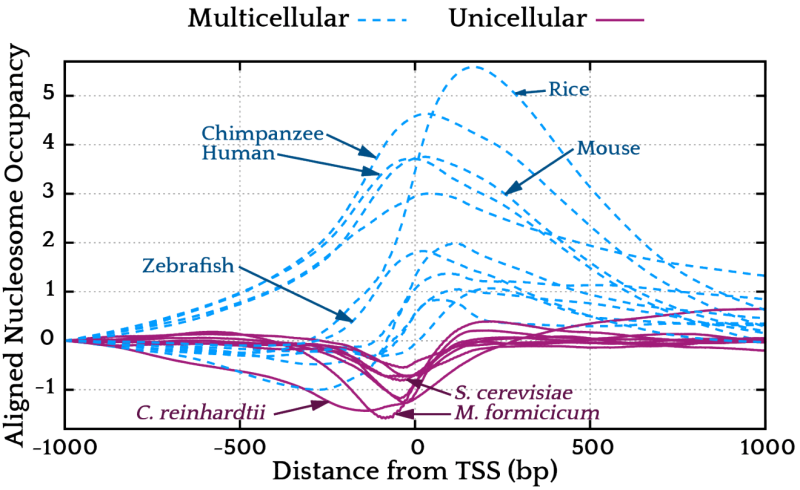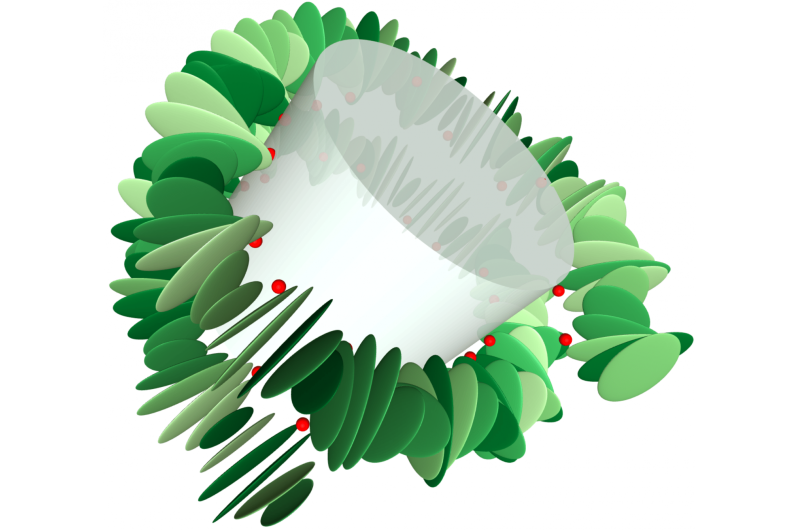Human DNA softer than DNA single-celled life

Single-celled organisms have stiffer DNA than multicellular lifeforms like humans and rice. Theoretical physicists managed to simulate the folding in full genomes for the first time to reach this conclusion. Publication in Biophysical Journal on February 7.
Local stiffness
DNA stores information using four base letters that encode for the proteins that arrange all processes in our body. With a length of about two meters each, DNA molecules are elaborately coiled to fit inside cells. Local variations in stiffness allow for less or more wrapping, affecting the readability per set of letters. These mechanical cues in genes provide a second layer of information, as Leiden physicist Helmut Schiessel theoretically demonstrated earlier.
General rule
Now, in follow-up research, Schiessel and his colleagues have improved their computer model, allowing them to calculate folding in the full genome of 50 species. This led to the discovery of a new general rule in biophysics: Unicellular species like yeast are characterized by stiff stretches in their DNA sequences at the beginning of genes, while multicellular lifeforms like humans, mice or zebrafish have soft stretches. "Unicellular species need access to all their genes in the one cell they have," Schiessel explains. "Therefore, it needs stiff DNA so it is easily read out. Humans have many different types of cells and we find that this is reflected in soft DNA."

Full genome
To make their discovery, the researchers averaged over many simulated gene sequences and looked at the stiffness right at the beginning of a new gene. Comparison with real-life experiments shows that the model works. Schiessel: "Our simulation is much faster than experiments, so we were able to analyze for the first time the full genome of several lifeforms. You would think from our finding that the softer the DNA, the more complex the lifeform, but funny enough, we found rice to have the softest DNA of all the species we analyzed."
More information: 'Genomes of Multicellular Organisms Have Evolved to Attract Nucleosomes to Promoter Regions', M.Tompitak, C. Vaillant and H. Schiessel, Biophysical Journal, 2017.
Journal information: Biophysical Journal
Provided by Leiden Institute of Physics




















